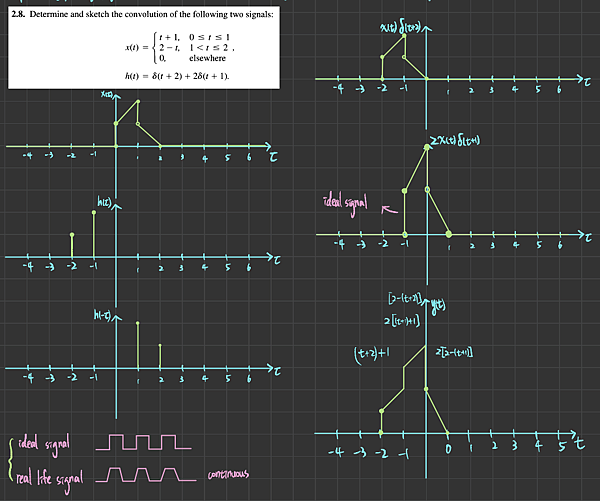
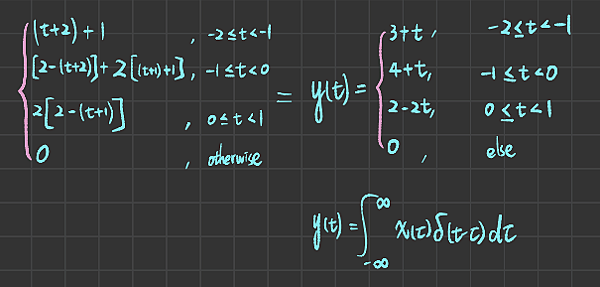
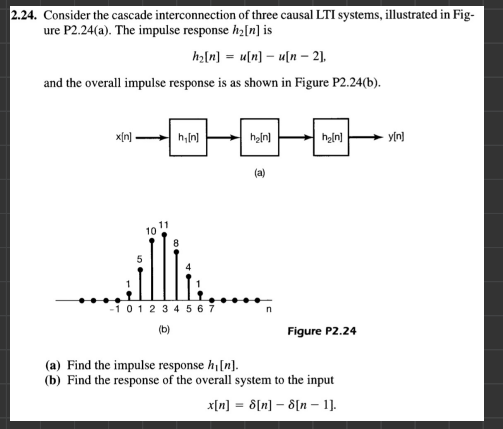
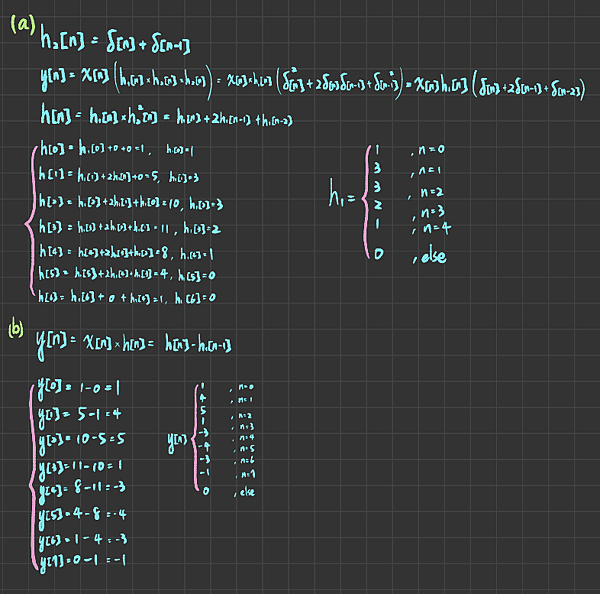
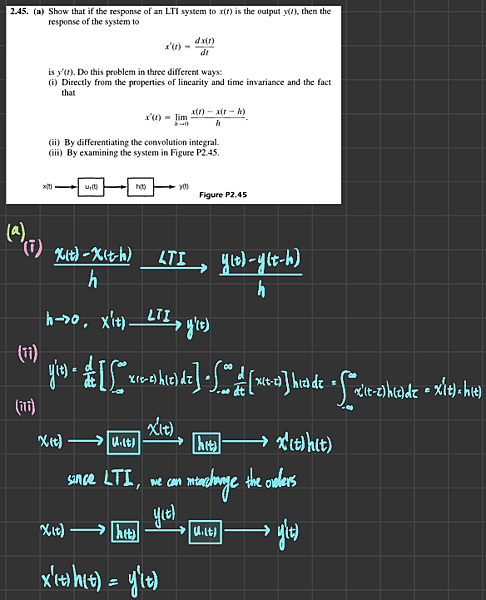
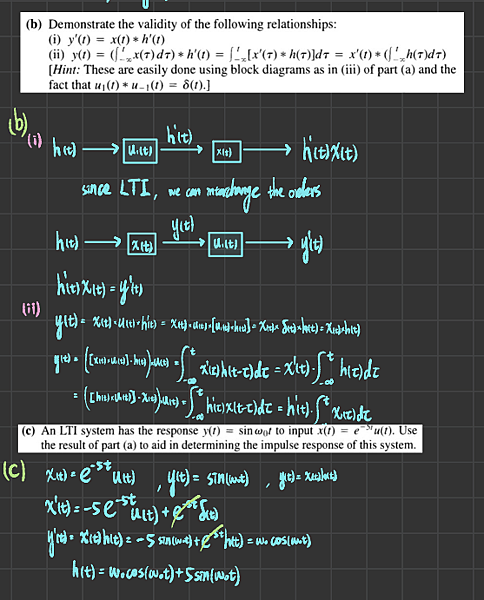
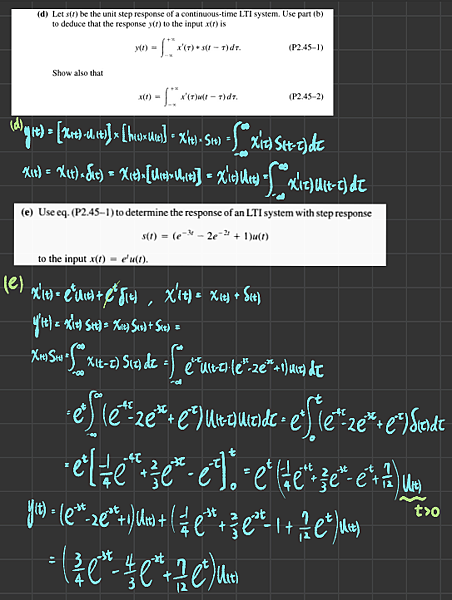
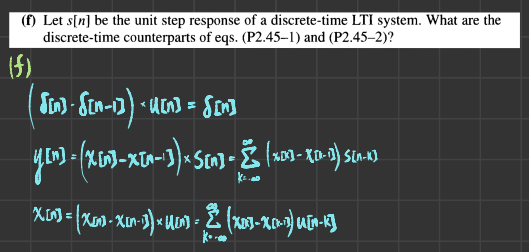
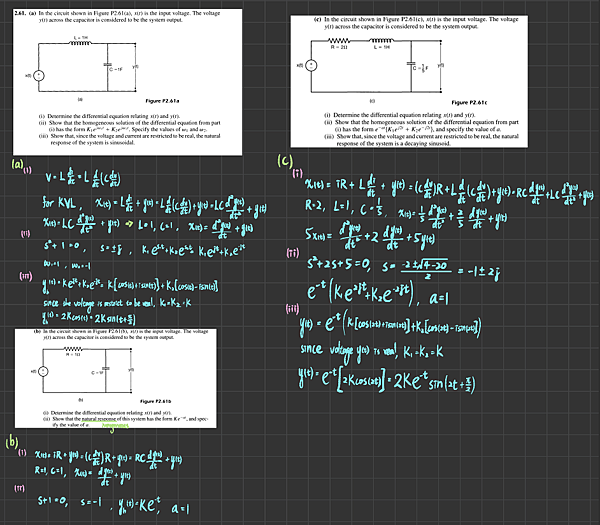
Determine and sketch the convolution of the following two signals: t +1, 0 <t<1 x(t) = {2-t, 1<t<2 0, elsewhere h(t) = (t + 2) + 2/(t+1)
Consider the cascade interconnection of three causal LTI system , illustrated in figure 3 , the impulse response h2[n] is h2[n] = delta[n] + delta [n-1] x[n] And the overall impulse response is shown bellow Find the impulse response h1,[n] Find the response of the overall system to the input x[n] = delta[n] - delta[n - 1]
how that if the response of an LTI system to an input x(t) is y(t), then the response to input x^'(t) = dx(t)/dt is y^'(t) = dy(t)fdt. Do this problem in two different ways (i) directly from the properties of linearity and time-invariance and the fact that x'(t) =lim_hrightarrow0 [x(t) - x(t-h))/h], and (ii) by differentiating the integral.
2.61. (a) In the circuit shown in Figure P2.61(a), x{t) is the input voltage. The voltage y(t) across the capacitor is considered to be the system output. L=1H m000000 y(t) C = 1F x(t) + (a) Figure P2.618 (i) Determine the differential equation relating X(t) and y(t). (ii) Show that the homogeneous solution of the differential equation from part (i) has the form Kjej@,! + Kzejw!. Specify the values of w, and w2. (iii) Show that, since the voltage and current are restricted to be real, the natural response of the system is sinusoidal. (b) In the circuit shown in Figure P2.61(b), x(t) is the input voltage. The voltage y(t) across the capacitor is considered to be the system output. ww R = 112 x(t) + y(t) C=1F (b) Figure P2.61b (i) Determine the differential equation relating x(t) and y(t). (ii) Show that the natural response of this system has the form Ke-", and spec- ify the value of a. (c) In the circuit shown in Figure P2.61(c), x(t) is the input voltage. The voltage y(t) across the capacitor is considered to be the system output. w R = 202 mm L = 1H x(t) TCF y(t) (c) Figure P2.610 (i) Determine the differential equation relating x(t) and y(t). (ii) Show that the homogeneous solution of the differential equation from part (i) has the form ef{Kjej21 + K2e j2}, and specify the value of a. (iii) Show that, since the voltage and current are restricted to be real, the natural response of the system is a decaying sinusoid.
2.45. (a) Show that if the response of an LTI system to x(t) is the output y(t), then the response of the system to x' (t) = dx(t) dt is y'(t). Do this problem in three different ways: (iii) By examining the system in Figure P2.45. x(t) u₁(t) h(t) y(t) Figure P2.45 b) Demonstrate the validity of the following relationships: (i) y'(t) = x(t) * h'(t) (ii) y(t) = (x(7) dT) * h'(t) = [',[x'(7) * h(7)]dt = x'(t) * ({ _'¸h(T)dt) [Hint: These are easily done using block diagrams as in (iii) of part (a) and the fact that u₁(t) * u_₁(t) = 8(t).]





 留言列表
留言列表


